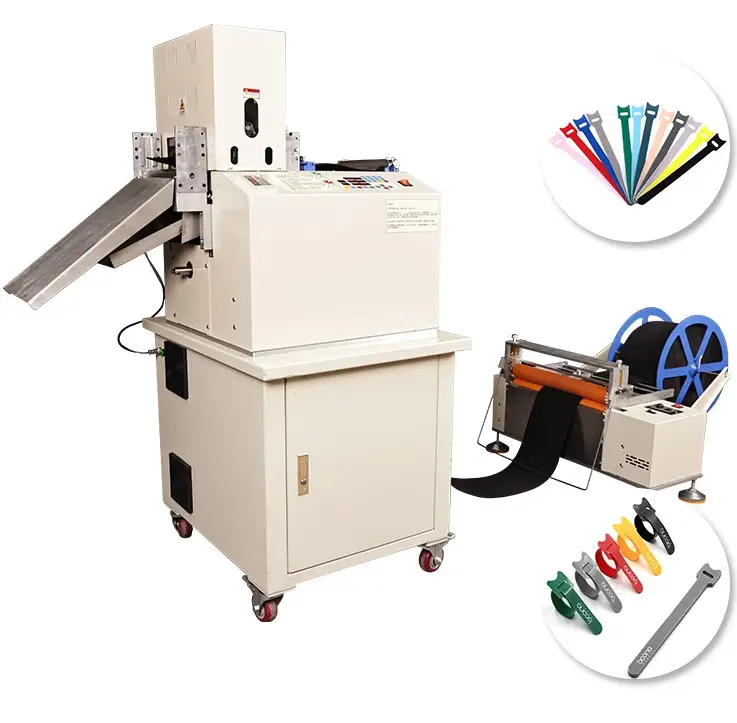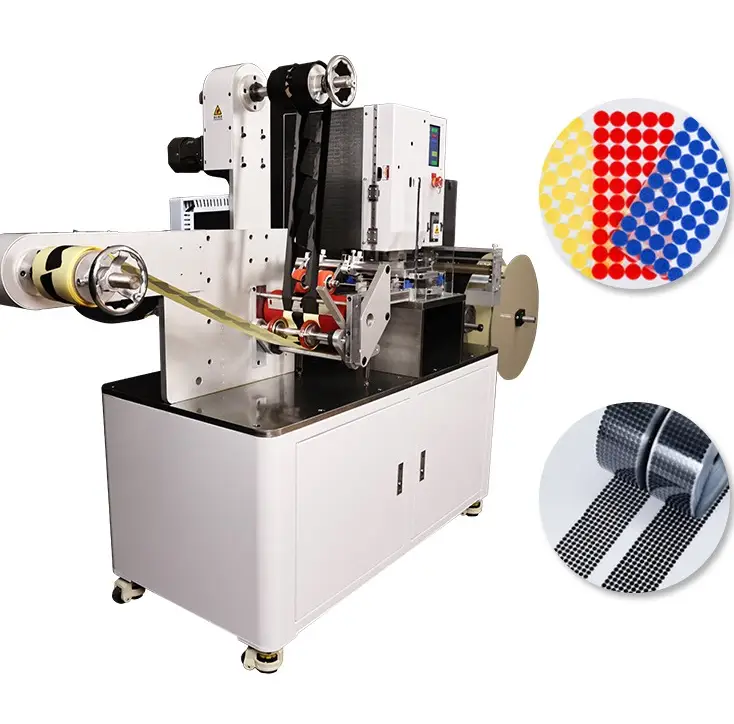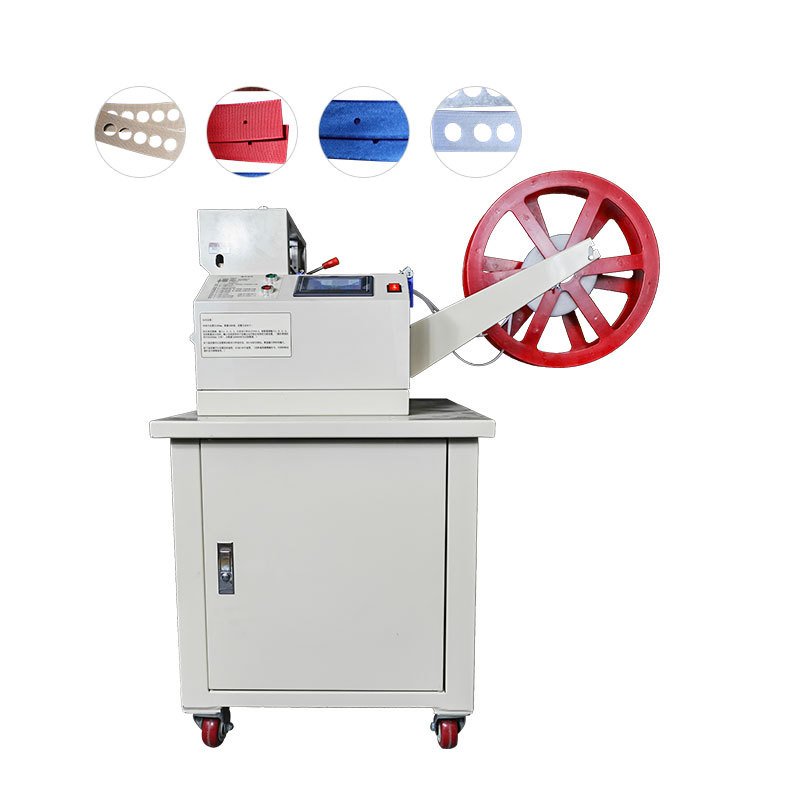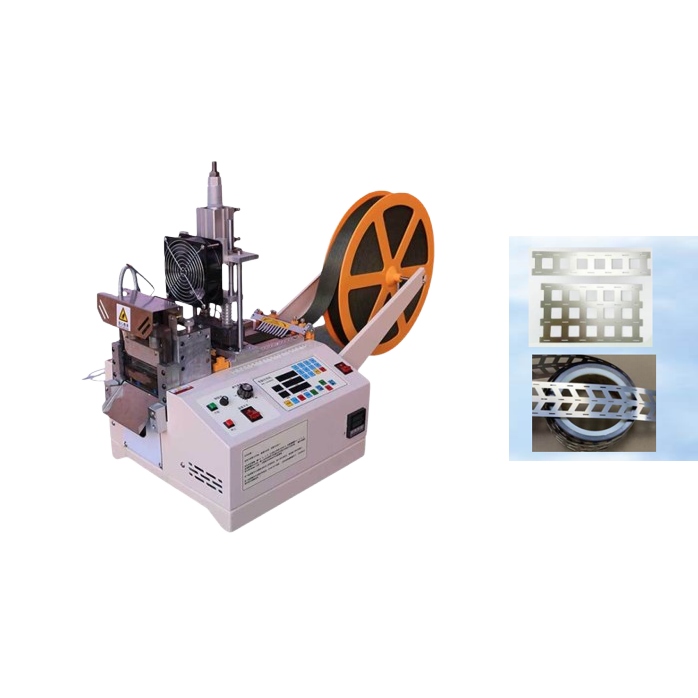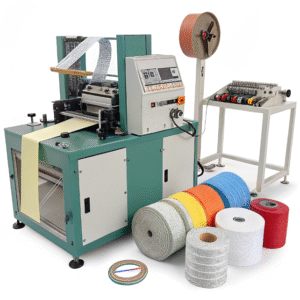Can Velcro cutting machines handle adhesive-backed Velcro tapes?

Adhesive-backed Velcro tapes are widely used but notoriously hard to cut cleanly without gumming up the blades.
Yes, specialized Velcro cutting machines can handle adhesive-backed tapes, but they require non-stick blades, optimized feed rollers, and careful heat settings to prevent residue buildup and cut distortion.
Yes, Velcro cutting machines can cut adhesive-backed Velcro tapes effectively, but only when equipped with non-stick blades, anti-adhesive feed systems, and precise heat controls. These sticky materials are harder to cut due to melting adhesives and residue buildup, which can damage blades or rollers. Machines with Teflon-coated blades, temperature-adjustable systems, and auto-cleaning rollers are ideal for handling adhesive Velcro efficiently. At Suzhou Haoxinhe Electrical Equipment Co., Ltd., we specialize in cutting solutions for sticky materials, ensuring clean, accurate results across industries like HVAC, medical, and packaging.
At Suzhou Haoxinhe Electrical Equipment Co., Ltd., we’ve engineered solutions specifically for this challenge, helping global buyers cut sticky materials efficiently.
Are sticky Velcro tapes more difficult to cut?
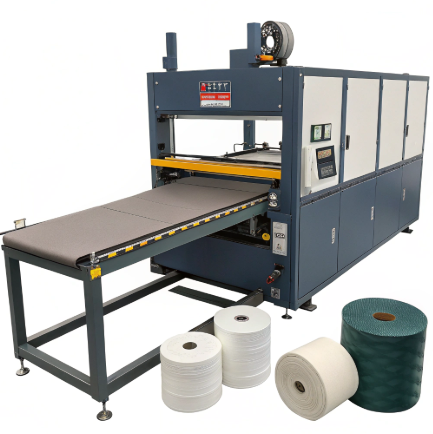
Yes, adhesive-backed Velcro is harder to cut than standard hook-and-loop. The sticky layer adds friction, melts at lower temperatures, and often leaves residue on the blade or feed system.
Adhesive-backed Velcro tapes demand non-stick blade coatings, controlled temperatures, and feed adjustments to ensure clean cuts without clogging or stretching.
Buyers who skip these customizations often face blade jams, frayed edges, or ruined rollers—especially during long production runs.
🧪 What Makes Adhesive Velcro Difficult?
Sticky Velcro types often use pressure-sensitive adhesives, heat-activated glues, or laminated foam layers. These cause:
- Blade gumming – adhesive melts and sticks to metal
- Edge fraying – sticky layer pulls loops during cutting
- Roller slippage – glue transfers to feeding systems
If not addressed, these issues can stop production or ruin high-value batches.
🔧 Machine Features That Handle Sticky Velcro
1. Teflon-Coated or Tungsten Blades
- Prevent glue buildup
- Easy to clean between runs
- Maintain sharpness despite residue
We install these in our webbing ribbon cutting machines and hot and cold cutting machines for sticky Velcro projects.
2. Temperature-Controlled Cutting
- Too much heat softens the glue, causing smearing
- Too little causes drag and incomplete cuts
Our machines include digital heat control that adjusts in real-time to prevent adhesive meltdown.
| Velcro Type | Suggested Blade Temp |
|---|---|
| Standard nylon Velcro | 180°C–220°C |
| Adhesive-backed Velcro | 120°C–160°C |
| Foam-backed adhesive | 100°C–140°C |
3. Anti-Stick Roller Surfaces
Some clients use rubberized rollers or Teflon-coated feed belts to prevent glue from building up during feeding.
We also add:
- Auto-cleaning roller wipers
- Material separators for dual-layer Velcro

🏭 Real Use Cases from Our Factory
HVAC Insulation Manufacturers
- Use foam-backed Velcro with pressure-sensitive adhesive
- Required a servo tension system + low-heat blade to cut thick rolls cleanly
Medical Device Assembly
- Use sterile adhesive Velcro for bandages and securing straps
- Needed a non-touch feeder system to prevent contamination from sticky buildup
Canadian Packaging Firm (Mark’s Client)
- Uses bubble wrap combined with sticky Velcro closure
- Upgraded to a custom hot/cold cutting machine with self-cleaning blade module
🧼 Cleaning and Maintenance Tips for Sticky Material Jobs
Cutting adhesive materials requires frequent care:
- Clean blades every 4–6 hours
- Use solvent-safe cloths (alcohol or acetone-based)
- Keep spare blades and rollers in rotation
At Suzhou Haoxinhe, we supply blade cleaning kits with every shipment, specifically for clients working with adhesive-backed tapes and foams.
📝 Setup Checklist for Sticky Velcro Tapes
| Step | Task |
|---|---|
| 1 | Use non-stick coated blade |
| 2 | Set cutting temp to 120–160°C |
| 3 | Adjust feed tension for added thickness |
| 4 | Clean rollers after each shift |
| 5 | Use low-friction rollers or feed belts |
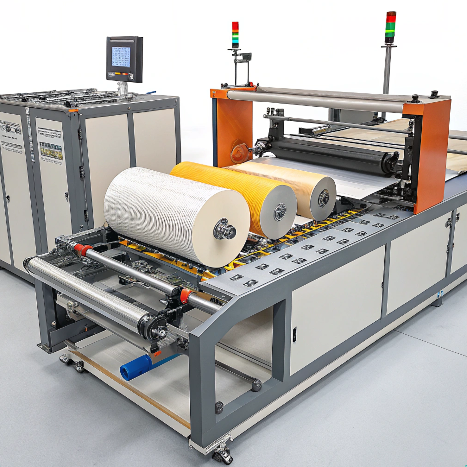
Conclusion
Adhesive-backed Velcro tapes can be cut effectively—but only with specialized blades, controlled heating, and anti-stick feeding systems built into your machine.
Insights
Cutting adhesive-backed Velcro is one of the trickiest jobs in the industry—not because it’s hard to slice, but because it loves to clog and gum up standard machines. I’ve worked with clients who ran standard blades on sticky Velcro and ended up stopping production every 30 minutes to scrape off residue.
One crucial upgrade we recommend: Teflon-coated blades + wiper-assisted rollers. It’s a small addition, but it makes a big difference in uptime. One HVAC client in Spain cut cleanup time by 80% after switching to our adhesive-ready machine setup.
Another detail most factories miss: adhesives don’t all melt at the same temperature. If you use the wrong heat setting, you’ll either smear glue or burn the Velcro backing. That’s why we pre-program custom temperature profiles for each client’s material type—especially those importing from different suppliers.
Bottom line: sticky Velcro isn’t a problem—it’s a process challenge. And with the right tooling and smart machine design, you’ll turn what used to be a pain point into a production strength.
At Suzhou Haoxinhe Electrical Equipment Co., Ltd., our cutting machines—including hot and cold cutting machines, webbing tape cutters, and protective foam cutters—are engineered to handle even the toughest adhesive Velcro tapes. With custom blade coatings, tension settings, and smart heat control, we ensure smooth production for sticky materials across industries.


